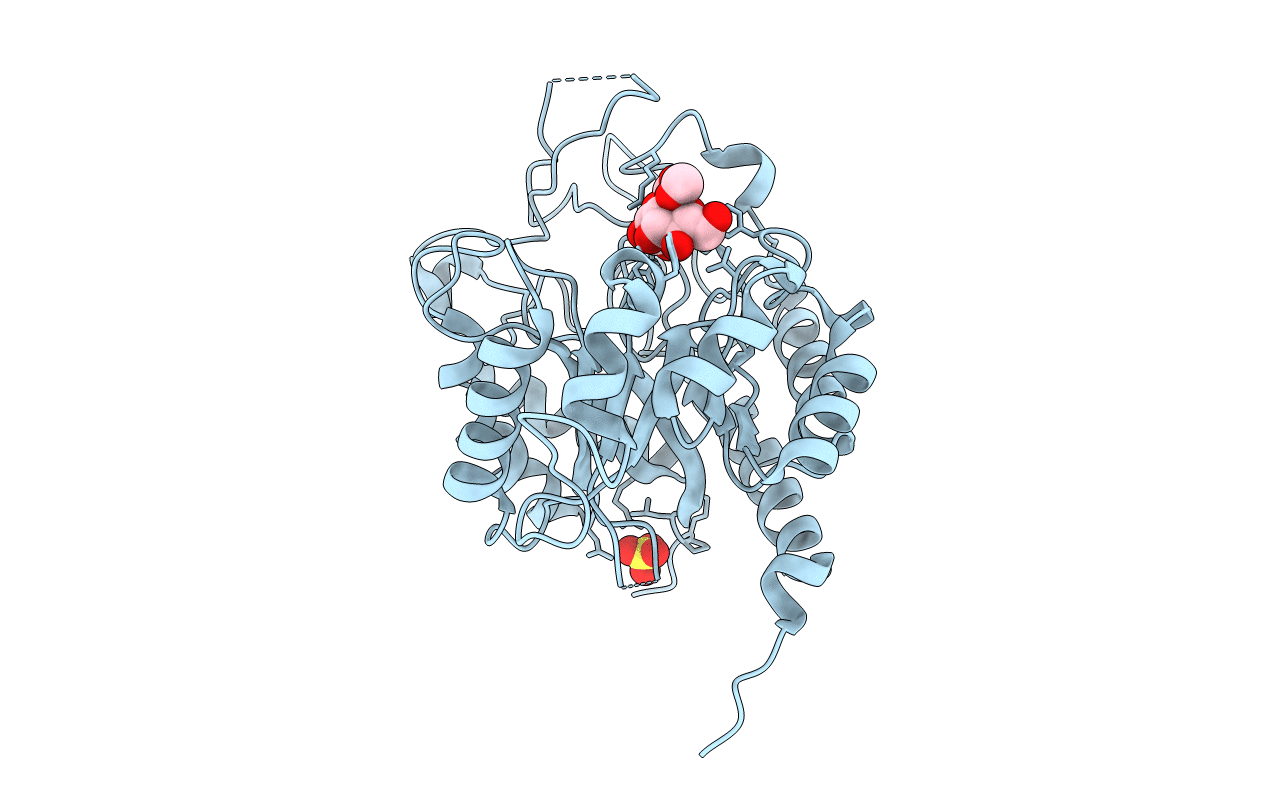
Deposition Date
2020-06-17
Release Date
2020-11-18
Last Version Date
2024-01-24
Entry Detail
PDB ID:
6ZFN
Keywords:
Title:
Structure of an inactive E404Q variant of the catalytic domain of human endo-alpha-mannosidase MANEA in complex with 1-methyl alpha-1,2-mannobiose
Biological Source:
Source Organism:
Homo sapiens (Taxon ID: 9606)
Host Organism:
Method Details:
Experimental Method:
Resolution:
1.10 Å
R-Value Free:
0.12
R-Value Work:
0.10
Space Group:
P 1 21 1


